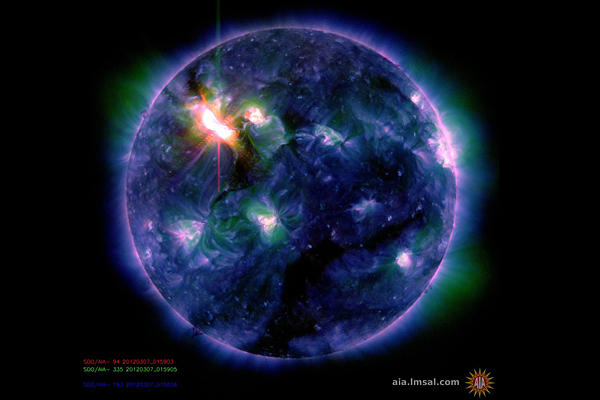Scientists say that the sun will undergo a magnetic flip in the coming months, an event that happens just once every eleven years and the effects of which will be registered throughout the solar system.
Elizabeth Barber
CSM
August 8, 2013

Once every 11 years, something unusual happens on the sun: The sun’s polar magnetic field weakens, bottoming out at nothing. the magnetic field appears again, it will be reversed. The sun’s north pole will go from negative to positive, and the south pole will switch from positive to negative.
Data from NASA-supported observatories indicate that the next flip will happen in just three to four months – the north pole has already jumped the gun and reversed, and scientists are not just waiting for the south pole to catch-up. The completed flip will herald changes throughout the entire solar system, according to a NASA video.
The sun’s magnetic influence extends some 8 billion miles through a region called the heliosphere. That region ends at the heliopause, the outermost boundary of our solar system that abuts interstellar space. So, when the sun’s polarity flips, the entire solar system will fell the effects of the change.
During the flip, what is known as the sun’s sheet – a massive surface some 10,000 km thick and billions of miles wide extending outward from the sun’s equator – will become wavy. That wavy sheet will create cosmic “stormy weather” throughout the solar system. At the same time, it will also better deflect the cosmic rays spewed from distant supernovae than does a smooth sheet, protecting shuttles and astronauts from the particles.
The sun’s magnetic field flips at the peak of each solar cycle, each of which are about 11 years long. This coming reversal will mark the midpoint of Solar Cycle 24, a solar maximum.
 Daily Stormer The Most Censored Publication in History
Daily Stormer The Most Censored Publication in History


